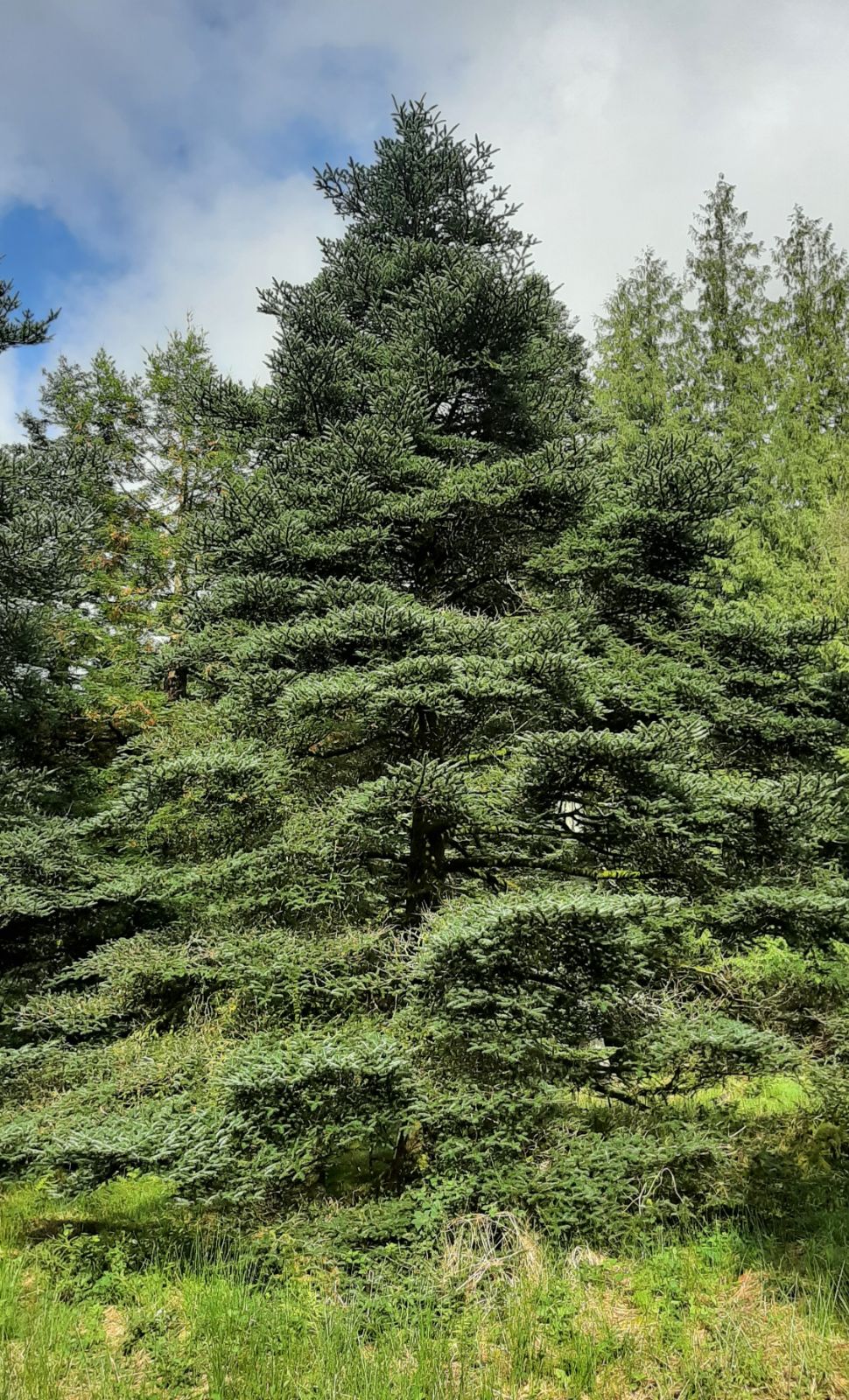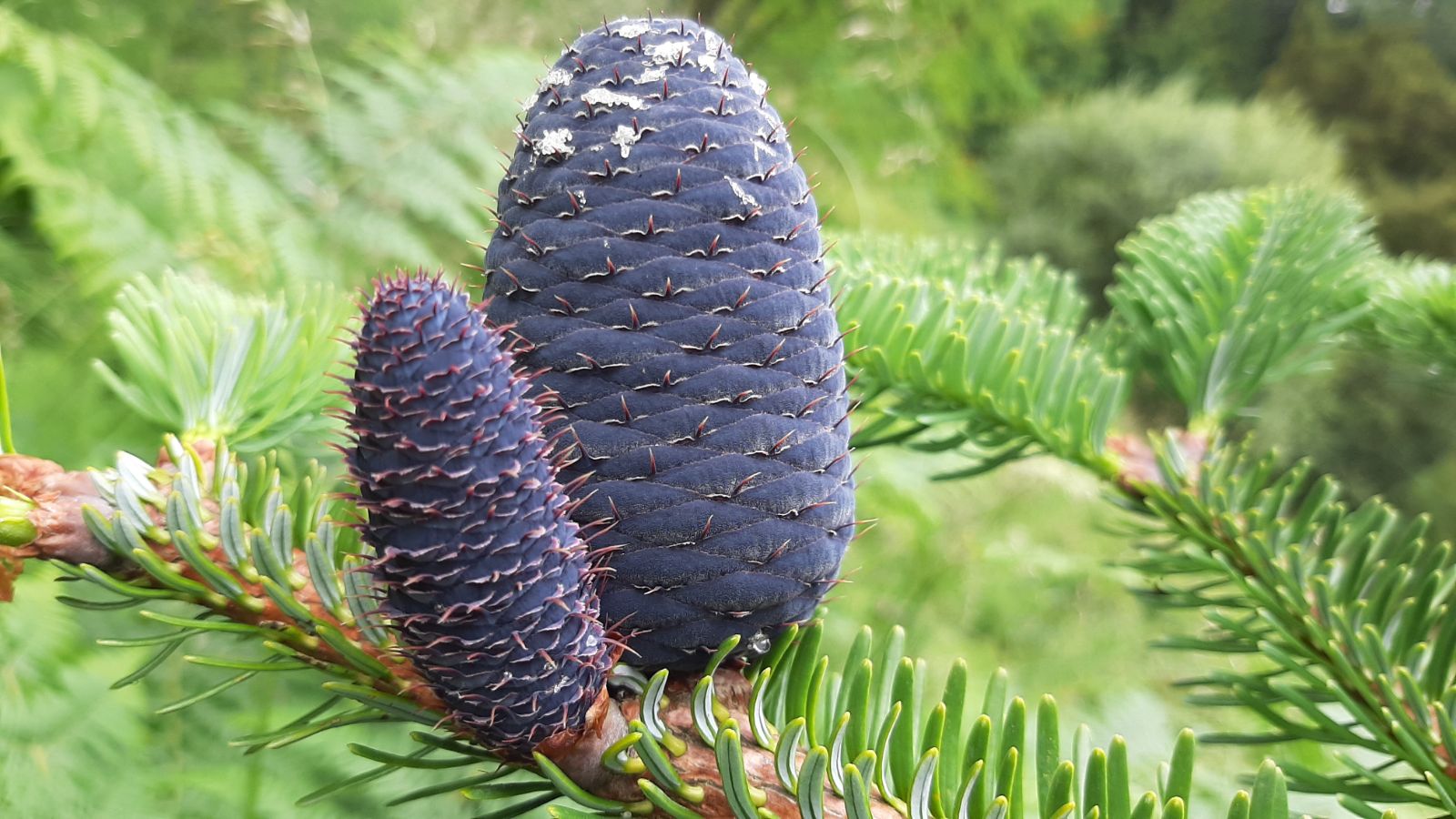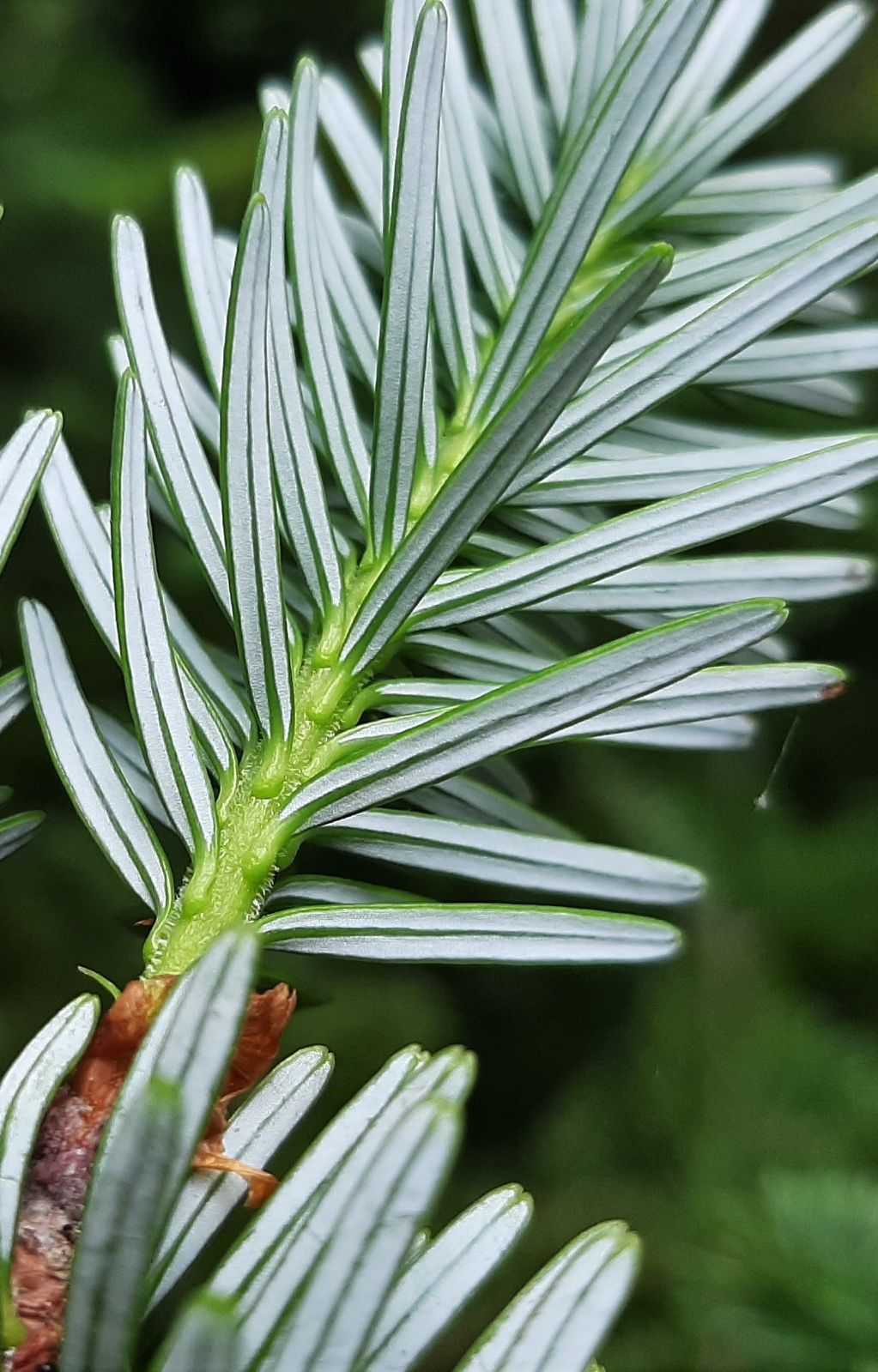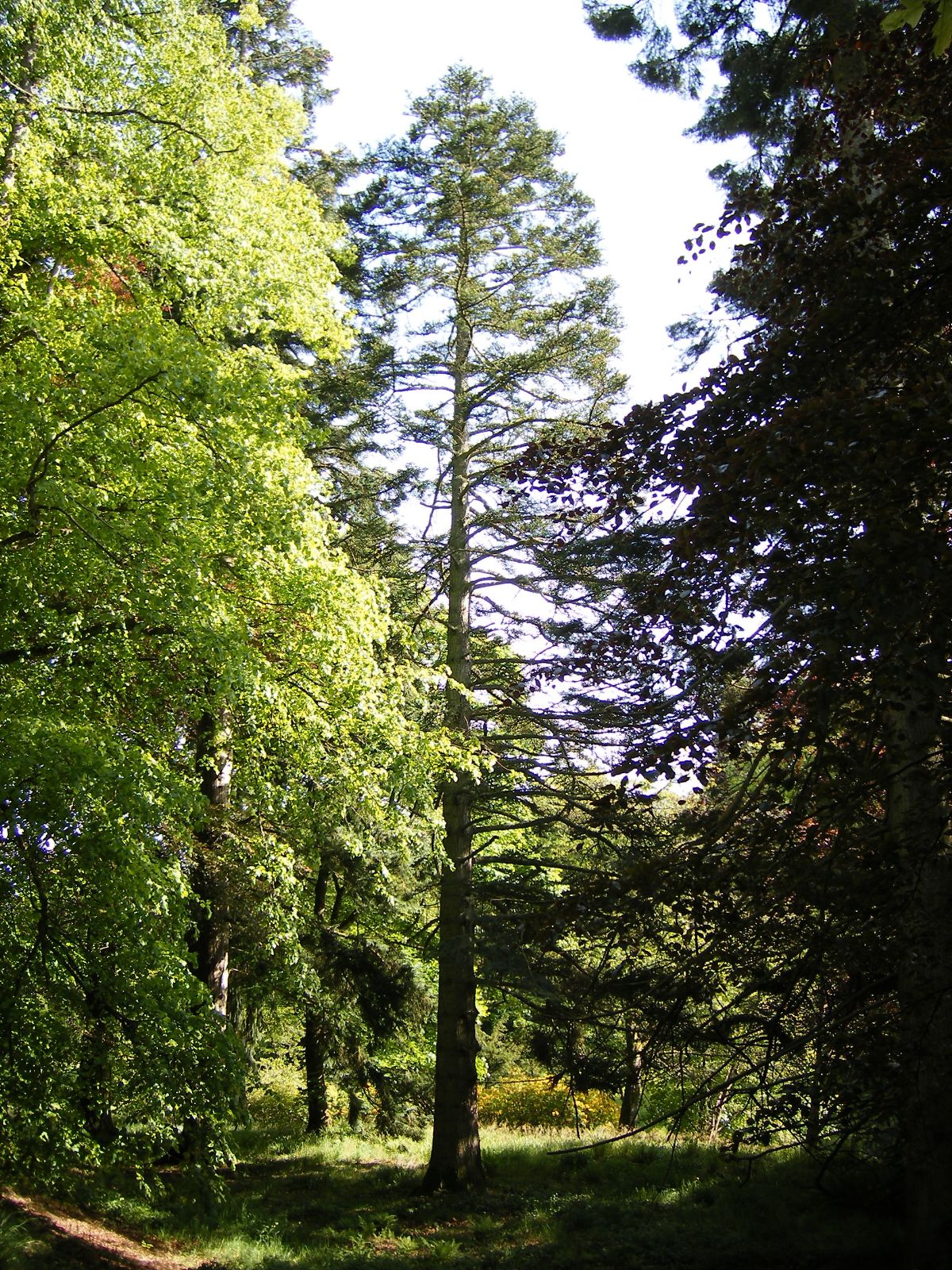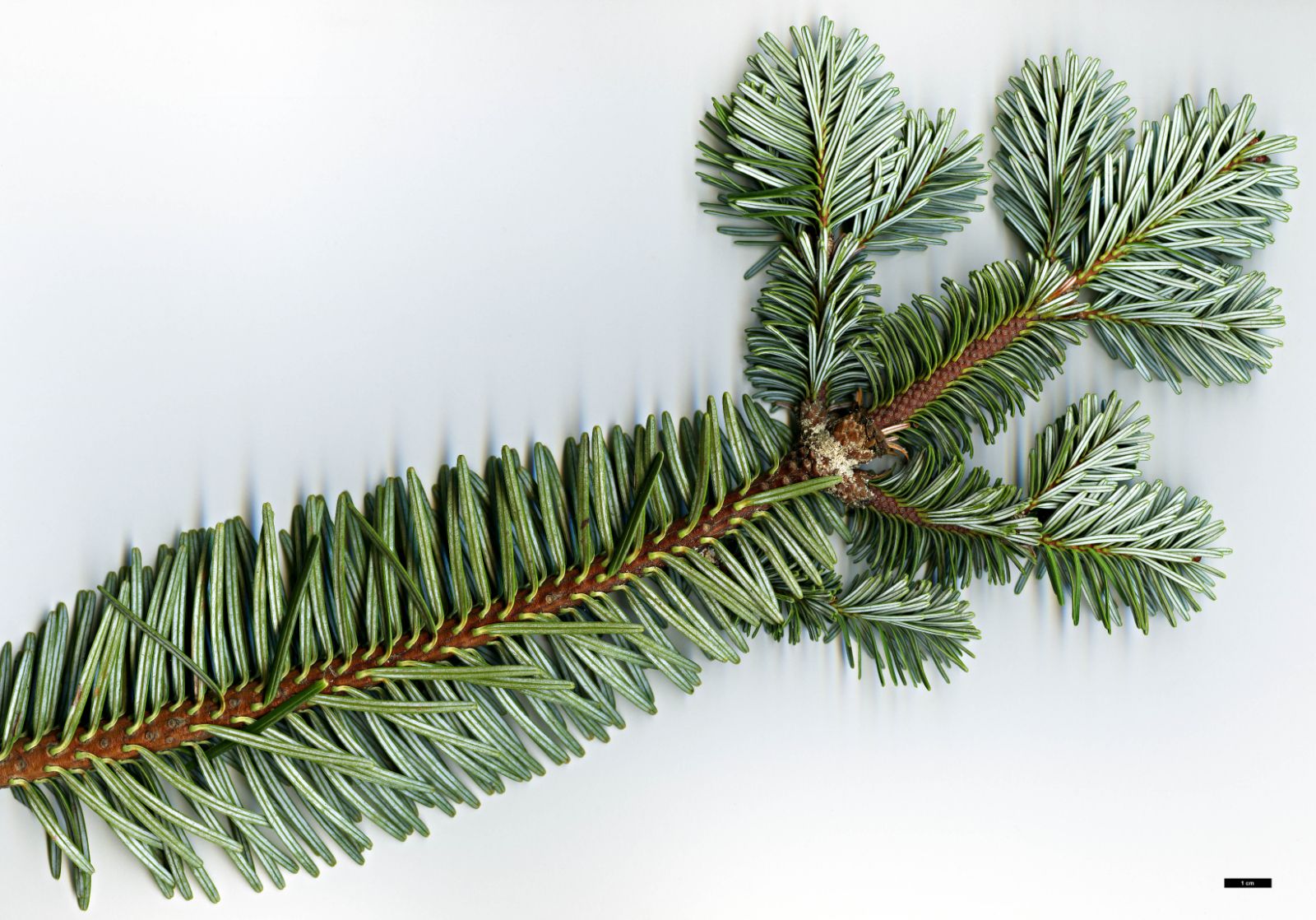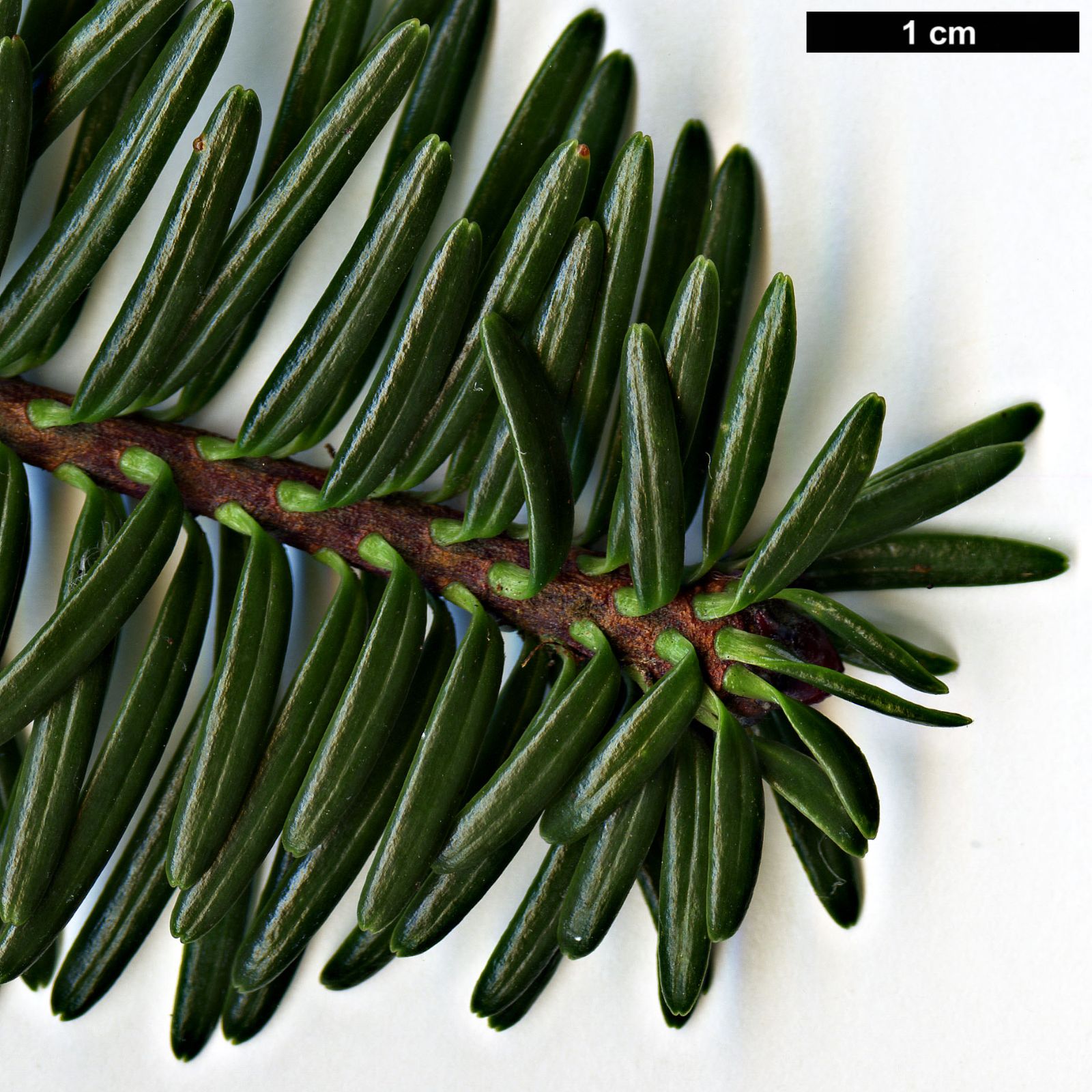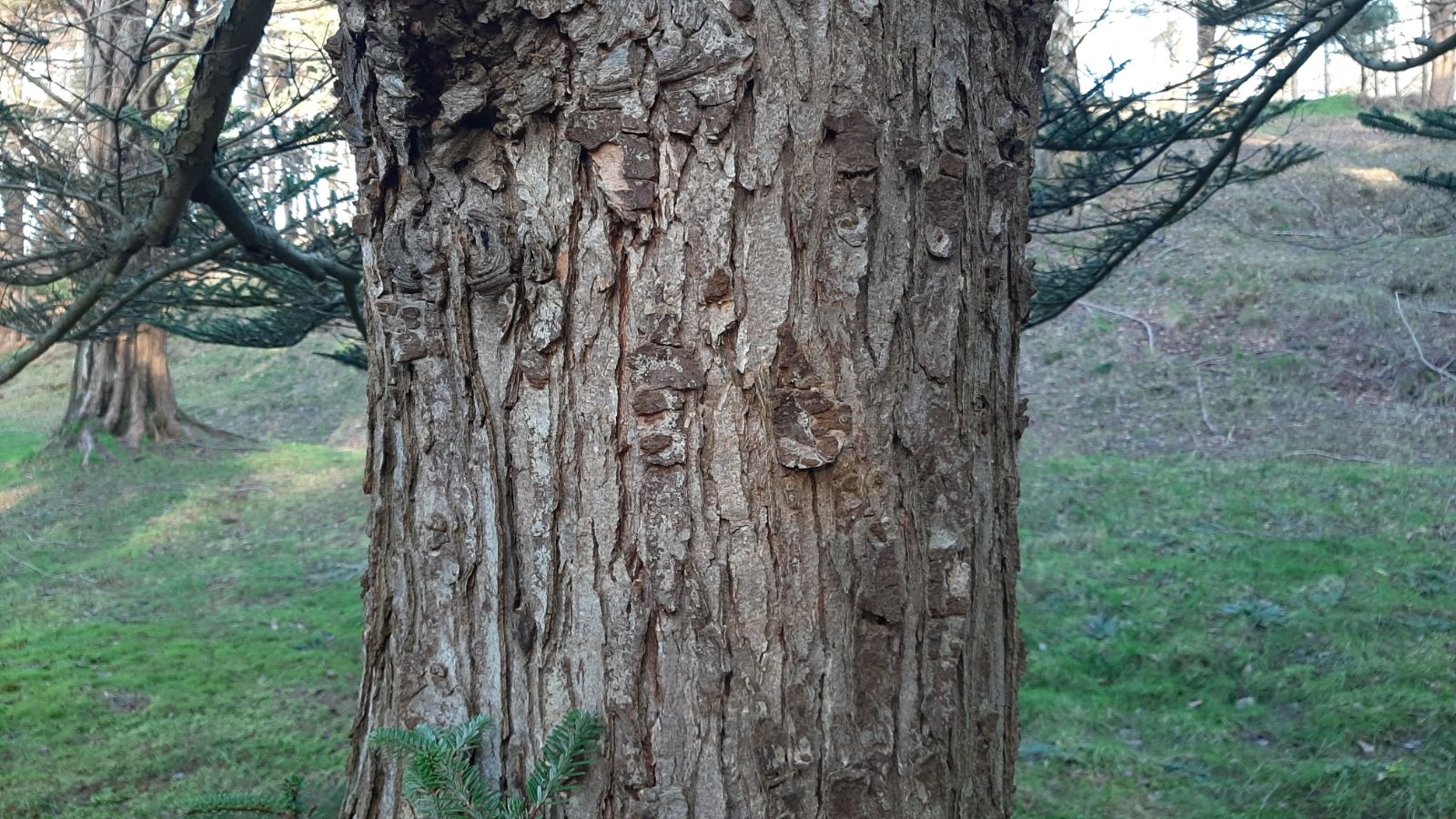Abies forrestii
Sponsor
Kindly sponsored by
Sir Henry Angest
Credits
Tom Christian (2021)
Recommended citation
Christian, T. (2021), 'Abies forrestii' from the website Trees and Shrubs Online (treesandshrubsonline.
Genus
Common Names
- Forrest Fir
- Chuandian Lengshan
Synonyms
- Abies delavayi var. forrestii (Coltm.-Rog.) A.B. Jacks.
Other taxa in genus
- Abies alba
- Abies amabilis
- Abies × arnoldiana
- Abies balsamea
- Abies beshanzuensis
- Abies borisii-regis
- Abies bracteata
- Abies cephalonica
- Abies × chengii
- Abies chensiensis
- Abies cilicica
- Abies colimensis
- Abies concolor
- Abies delavayi
- Abies densa
- Abies durangensis
- Abies ernestii
- Abies fabri
- Abies fanjingshanensis
- Abies fansipanensis
- Abies fargesii
- Abies ferreana
- Abies firma
- Abies flinckii
- Abies fordei
- Abies forrestii agg. × homolepis
- Abies fraseri
- Abies gamblei
- Abies georgei
- Abies gracilis
- Abies grandis
- Abies guatemalensis
- Abies hickelii
- Abies holophylla
- Abies homolepis
- Abies in Mexico and Mesoamerica
- Abies in the Sino-Himalaya
- Abies × insignis
- Abies kawakamii
- Abies koreana
- Abies koreana Hybrids
- Abies lasiocarpa
- Abies magnifica
- Abies mariesii
- Abies nebrodensis
- Abies nephrolepis
- Abies nordmanniana
- Abies nukiangensis
- Abies numidica
- Abies pindrow
- Abies pinsapo
- Abies procera
- Abies recurvata
- Abies religiosa
- Abies sachalinensis
- Abies salouenensis
- Abies sibirica
- Abies spectabilis
- Abies squamata
- Abies × umbellata
- Abies veitchii
- Abies vejarii
- Abies × vilmorinii
- Abies yuanbaoshanensis
- Abies ziyuanensis
Tree to 40 m, 1–1.5 m dbh. Crown broad-conical or pyramidal in young trees, becoming conical to columnar, often cancelabra-like and flat topped in old trees. Bark of young trees smooth for many years, grey-brown; later dark brown and developing irregular fissures on the bole. First order branches long, spreading horizontally; second order branches assurgent. Branchlets assurgent, thick, purplish- or reddish-brown, greying with age, weakly grooved at first, later smooth, glabrous, or sometimes with a fine whitish pubescence in grooves on immature shoots, soon shed, or retained on very weak, sterile, shaded side shoots for up to 1 year. Vegetative buds globular, 4–10 × 3–7 mm, largest on vigorous leading shoots, red-brown but usually covered with a thick white resin through winter, appearing fused. Leaves densely arranged in multiple ranks, 1.5–3(–4) cm × 2–2.5 mm, base twisted, margins flat, apex emarginate, rich glossy green or weakly glaucous green above, two white or greenish-white stomatal bands beneath separated by a green midrib, variable in arrangement: on old and shaded trees typically parted above and below the shoot by a ‘V’, apex emarginate; on vigorous young trees often assurgent and forming a flattened ‘plane’ above the shoots even on sterile branches, the leaves of the most vigorous leading shoots often swept backward with acute apices. Pollen cones 3–4.5 cm long, yellowish with purple microsporophylls. Seed cones short-pedunculate, thick, barrel-shaped, apex obtuse or retuse, (6–)10–14 × 4–6 cm, rich purple-blue with blue bracts when immature, ripening through indigo to dark purplish-brown or -black at maturity; seed scales cuneate-obovate, 2 × 1.8 cm at mid-cone; bracts oblong or spathulate, 2–3 cm long, included with only the cusps visible at maturity, or slightly exserted, rarely fully included. (Farjon 2017; Fu, Li & Mill 1999).
Distribution China SW Sichuan, SE Xizang (Tibet), NW Yunnan
Habitat Coniferous or mixed forests, 2500–4200 m asl, often with Pinus densata at lower elevations, occurring with Picea likiangensis, Pinus armandii, and Tsuga chinensis at higher elevations. It is replaced at altitude on Yulongxue Shan by A. georgei, and perhaps by other closely related species in other areas.
USDA Hardiness Zone 6b
RHS Hardiness Rating H7
Conservation status Least concern (LC)
Taxonomic note Farjon continues to recognise three varieties of A. forrestii in addition to the type (var. ferreana, var. georgei, var. smithii) (Farjon 1990; 2017) but we consider it more logical to follow the approach adopted by Flora of China (Fu, Li & Mill 1999) and by Debreczy & Rácz (2011) in recognising these as A. ferreana and A. georgei, with var. smithii reduced to synonymy with A. georgei. For further discussion see ‘Abies forrestii and its relatives’. The most immediate and reliable means of distinguishing A. forrestii from its near allies is by its glabrous shoots. The shoots of A. ferreana and A. georgei are obviously pubescent. There is potential for confusion with A. fabri, but that differs in several features, most notably the colour of the shoots. Hairless forms of A. fargesii (var. fargesii) differ in their slender, maroon or purple shoots which are more obviously ridged, and in their flaking bark. The same characters also help to separate the variably pubescent A. fargesii var. faxoniana from A. ferreana and A. georgei.
From the very day of its discovery Abies forrestii has been confused with its near neighbour A. delavayi. Forrest discovered ‘his fir’ on the slopes of the Jade Dragon Snow Mountain (Yulongxue Shan) in Yunnan in 1910, but thought it just a form of A. delavayi (itself still poorly understood at the time) and introduced it under this name. Its distinctiveness would soon be spotted by Charles Coltman-Rogers who grew it at Stanage Park, Powys, Wales, and who formally named it in Forrest’s honour in 1919 (Bean 1976). Both species belong to the perplexing plethora of blue-coned firs distributed throughout the Sino-Himalayan area; their diversity is introduced in the article ‘Abies in the Sino-Himalaya’ and the different species complexes of this region are discussed in greater detail in dedicated articles – the diversity of species closely related to A. forrestii is discussed in the article ‘Abies forrestii and its relatives’.
Forrest made the original introduction under F 6744. Assumed original trees survive at Stanage Park, where the largest was 22 m × 0.6 m dbh in 2009, but the largest on record in cultivation are two trees of unknown origin in the grounds of Cortachy Castle, Angus, Scotland, both approaching 30 m in 2017 (Tree Register 2020). A large tree at Benmore Botanic Garden in Argyll, Scotland, was 22 m × 0.74 m dbh in 2017 (though erroneously labelled A. delavayi and designated the UK and Ireland champion for that species). A 1970s resowing of F 6744 produced several trees that now grow in the Golden Gates pinetum at Benmore. Numerous further collections followed the original, both from Forrest and others, before the fall of the bamboo curtain in 1949. Although western collecting teams began a gradual return to China in the 1980s, it would be some time until A. forrestii was introduced again, and indeed, most recent collections apparently represent one of its near allies, with the result that typical A. forrestii is becoming quite a rare plant in gardens.
Genuine introductions of recent years include ACE 2414 and 2415, but most modern collections from the locus classicus of Yulongxue Shan represent A. georgei which replaces A. forrestii there at altitude; this can be swiftly distinguished by its densely hairy shoots. ACE 1842 was introduced as A. forrestii var. forrestii, but examples seen at the Royal Botanic Garden Edinburgh and the Howick Arboretum both have densely hairy shoots, again fitting A. georgei (pers. obs. 2020). ACE 2094 from nearby Haba Shan probably represents A. georgei. SICH 659 was introduced from Jiulong County in southern Sichuan as A. georgei but this has more or less glabrous shoots and fits A. forrestii.
In common with all firs from the region A. forrestii can be slow to establish, often sitting for several years before commencing meaningful growth. Once established though it can be, for a while at least, a strikingly attractive tree. It is known to hybridise with A. salouenensis and forms of this hybrid are in cultivation, discussed here under A. × chengii.


